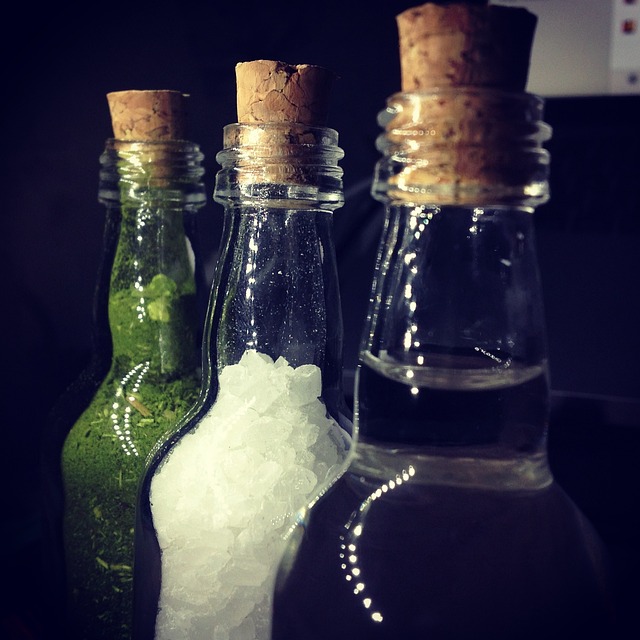Cold therapy, including cold plunges and ice baths, is a natural solution to reduce wrinkles by combating oxidative stress caused by free radicals. It boosts antioxidant defenses, reduces inflammation, slows down free radical production, and stimulates cell protection hormones. Regular sessions can promote collagen synthesis, protect skin from environmental stressors, enhance metabolism and circulation through brown adipose tissue (BAT) activation, tighten the skin by vasoconstriction, and improve lymphatic drainage. However, it's important to start with brief exposures and consult a healthcare provider before beginning, as cold therapy may not be suitable for everyone due to potential side effects.
“Unveil the secrets of a youthful glow with cold plunges—a rising trend in skincare. This practice goes beyond a refreshing splash; it’s a powerful tool to combat oxidative stress, a key driver of skin aging.
Our article explores the science behind cold therapy and its anti-aging potential, delving into how it reduces wrinkles and improves skin health. We’ll guide you through understanding oxidative stress, its impact on skin, and the benefits of incorporating cold plunges into your daily routine. Plus, discover essential precautions to ensure safe and effective practice.”
Understanding Oxidative Stress and Its Impact on Skin Aging
Oxidative stress is a key contributor to skin aging, leading to the formation of wrinkles and other signs of aging. This process occurs when an imbalance between free radicals—unstable molecules that damage cells—and antioxidants in our bodies causes cellular damage. Free radicals are produced as byproducts of normal bodily functions, but environmental factors like pollution, UV radiation, and smoking can significantly increase their levels. Without adequate antioxidant protection, these free radicals deplete collagen and elastin fibers, the structural support system of the skin, resulting in loss of firmness and elasticity. This degradation accelerates visible aging, manifesting as wrinkles, fine lines, and sagging skin.
Cold therapy, particularly cold plunges or ice baths, offers a natural way to combat oxidative stress and its impact on skin health. The exposure to low temperatures triggers a cascade of physiological responses that enhance the body’s antioxidant defenses. Cold water constricts blood vessels, reducing inflammation and slowing down free radical production. It also stimulates the release of norepinephrine, a hormone known to protect cells from damage caused by oxidative stress. By incorporating regular cold therapy sessions into your skincare routine, you can potentially mitigate the effects of environmental stressors on your skin, promote collagen synthesis, and achieve a more youthful-looking complexion.
The Science Behind Cold Plunges and Their Anti-Aging Benefits
The science behind cold plunges and their anti-aging benefits is fascinating. When your body is exposed to extreme cold, it initiates a series of physiological responses designed to protect itself. One key mechanism is the stimulation of brown adipose tissue (BAT), often referred to as “brown fat.” Unlike white fat, BAT generates heat by burning calories, a process known as thermogenesis. This not only helps maintain core body temperature but also boosts metabolism and increases circulation, all of which contribute to reducing oxidative stress and signs of aging.
Additionally, cold therapy for wrinkle reduction has gained traction due to its ability to enhance collagen production. Collagen is a crucial protein that provides structural support to our skin, keeping it firm and supple. Exposure to cold triggers the body to produce more collagen, helping to fill in fine lines and wrinkles from within. This natural process can lead to improved skin elasticity and a more youthful appearance without the need for invasive procedures or topical treatments.
Incorporating Cold Therapy into Your Skincare Routine
Incorporating cold therapy into your skincare routine can be a game-changer for reducing oxidative stress and signs of aging, including wrinkles. This simple yet powerful technique involves exposing your skin to controlled cold temperatures, typically through ice or cold water. By doing so, you stimulate blood flow, which helps deliver essential nutrients and oxygen to the skin cells, promoting their health and regeneration. The increased circulation also enhances lymphatic drainage, a process that rids the body of toxins and waste products responsible for accelerating aging.
When incorporated into your daily routine, cold therapy can significantly reduce inflammation, one of the primary contributors to premature aging. It tightens the skin by causing temporary vasoconstriction, which leads to improved elasticity and a more youthful appearance. Moreover, the cooling effect helps to calm and soothe irritated skin, making it an excellent treatment for conditions like acne or rosacea. So, whether through cold water washes, ice masks, or refreshing toners, adding cold therapy to your skincare regimen is a straightforward way to combat oxidative stress and keep your skin looking radiant and youthful.
Potential Side Effects and Precautions for Safe Practice
While cold plunges offer numerous benefits for reducing oxidative stress and signs of aging, it’s important to be aware of potential side effects. Extreme cold exposure can cause temporary skin irritation, redness, or a stinging sensation, especially for those with sensitive skin. It may also lead to increased heart rate and blood pressure in the short term, which is generally safe for most people but should be monitored, particularly by individuals with cardiovascular conditions.
To practice cold therapy safely, start with brief, gradual exposures of 30 seconds to a minute, gradually increasing duration as your body adapts. Use cold water or ice baths, ensuring proper safety precautions like wearing protective gear or gradually lowering yourself into the water to avoid shock. Always consult with a healthcare provider before starting any new wellness routine, especially if you have underlying health conditions or are pregnant.
Cold plunges, as a form of cold therapy, have gained recognition for their potential to reduce oxidative stress and combat signs of aging. By triggering a range of physiological responses, including increased circulation and cellular repair, cold exposure may offer significant anti-aging benefits. Incorporating regular cold therapy into your skincare routine could be a game-changer in your quest for youthful, radiant skin. Remember, while cold plunges show promise, individual results may vary, and consulting a dermatologist is advisable before starting any new treatment regimen.
